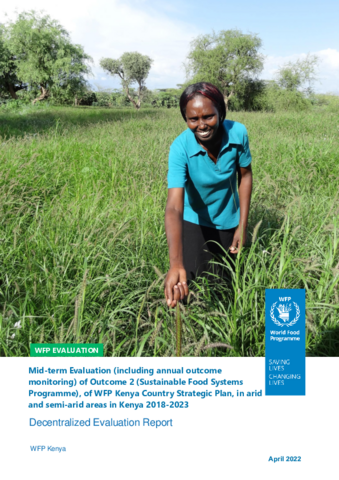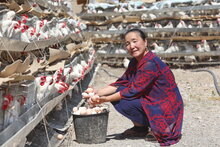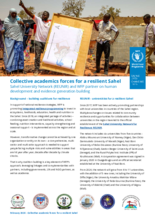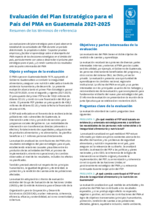
Overarching evaluation questions are: (i) To what extent is the SO2 programme relevant to the needs of targeted smallholder producers and food-insecure, vulnerable populations? (ii) How coherent is the SO2 programme with relevant Government of Kenya policies and programmes, interventions of the United Nations in Kenya and other external partners? (iii) To what extent have resilient livelihoods of targeted population been achieved? (iv) To what extent were SO2 outputs achieved as planned and scheduled, and to what extent did they achieve their planned contribution to SO2? (v) What impact has the SO2 programme had on livelihoods? (vi) What proportion of target households no longer require the kind of support that the SO2 programme has provided? (vii) Do communities have the commitment and capacity to sustain and further build the livelihood resilience of their members? (viii) Is the policy framework for support to livelihood resilience and sustainable, inclusive food systems comprehensive and appropriate?
Key evaluation findings included:
- The SO2 programme is highly relevant to the majority of rural food-insecure households in target counties and to the broader economic, social and demographic food systems contexts as well as to the reality of increasingly frequent climate shocks and stresses.
- At the outcome level, SO2 has not resulted in enhanced consumption of safe, nutritious and diversified foods across all livelihood zones. However, in a context of drought and declining food security in the arid and semi-arid (ASAL) counties food consumption scores have remained stable amongst SO2 beneficiaries, suggesting that WFP food and cash transfers are helping households to withstand the impacts of drought.
- There are preliminary and tentative indications of positive changes in the livelihoods of ASAL residents, with irrigation emerging as a key driver. Evidence of livelihood changes includes increased physical human and financial capital of some smallholder farmers. There has been some impact on nutrition and on food safety and quality, as well as awareness on aflatoxin, but progress is still limited.
- The strategic efficiency of implementing the SO2 programme has been good. Strengthening the capacities of County Governments has been more challenging and complex than envisioned. But WFP has gained respect of government and partners and has developed a clear comparative advantage through its work at county level.
- Significant policy and programming work has been delivered by WFP at county level. However, progress towards sustainability is fragile at the MTE point.
Key recommendations from the evaluation included:
- Intensify the focus of the SO2 programme on climate resilience as the key characteristic for sustainability and sustainable food systems towards which the programme is working.
- Strengthen the integration of efforts and work streams across the SO2 programme, maximising focus and not embarking on any further pilots during this CSP.
- Promote and where possible provide meaningful ongoing support to ensure the food security of communities and households that no longer receive direct transfers.
- Strengthen focus on gender at all levels of SO2 programme planning, implementation, and monitoring, ensuring adequate resources are allocated to SO2 gender priorities.
- Reappraise SO2 programmes with a focus on youth, to make them more effective.



